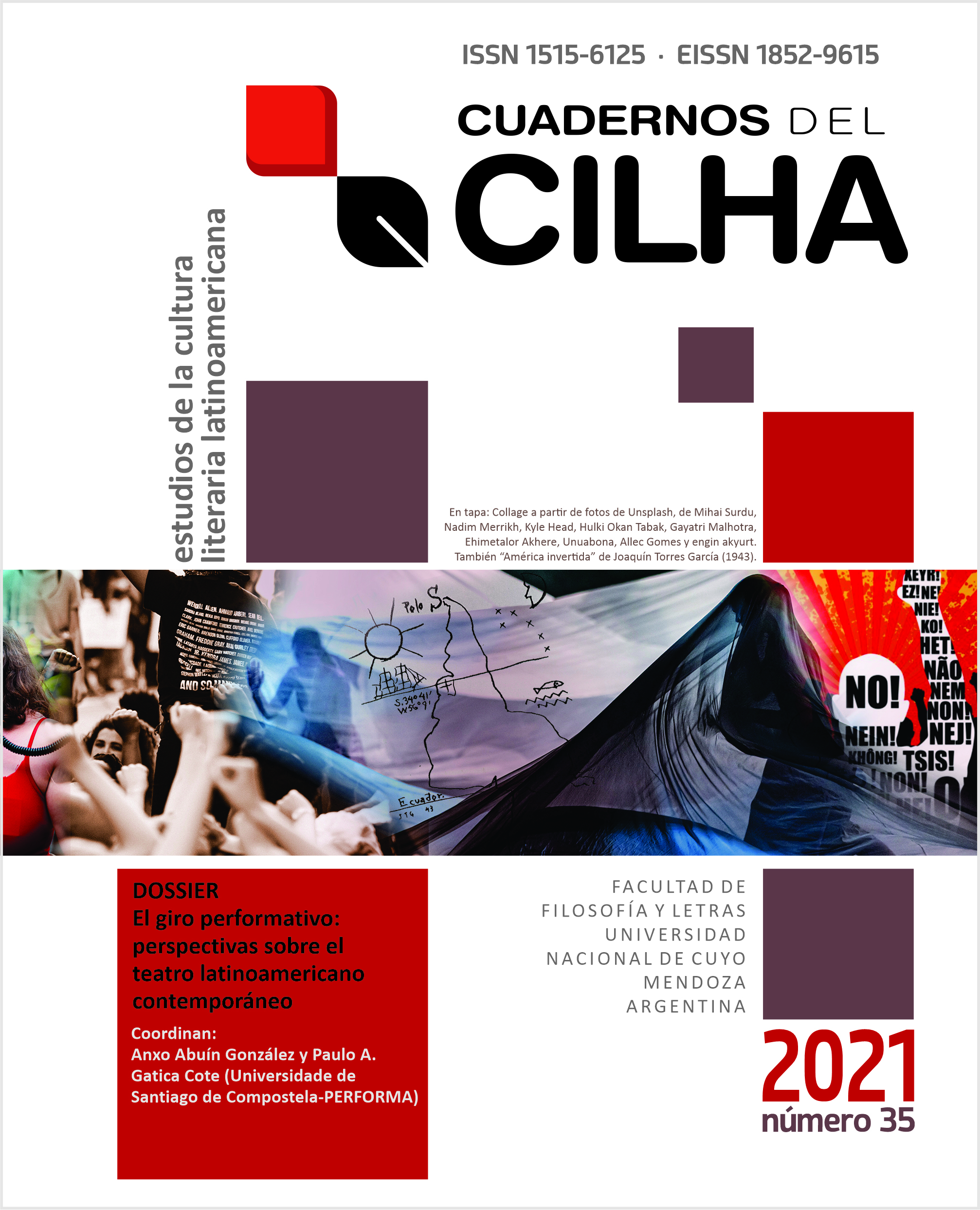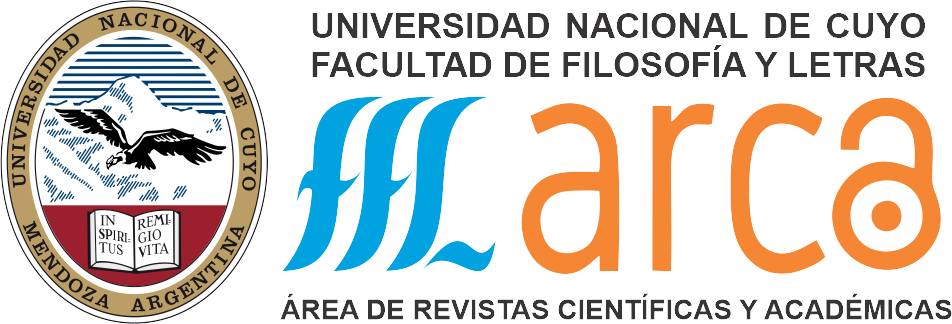Schlemiel, Ruth, Esther and Ashavero: Samuel Glusberg's Symbolic Reelaborations around Wandering, Interculturality and the New Belonging
DOI:
https://doi.org/10.48162/rev.34.021Keywords:
Samuel Glusberg, Argentine Jewish Literature, Interculturality, Ruth y NoemíAbstract
In 1934, Enrique Espinoza (pseudonym of Samuel Glusberg) published his second book of short stories, Ruth and Noemí. In that volume, he once again deals with one of the main issues of Argentine Jewish literature of the early twentieth century: how to conceive intercultural relations between Jews and non-Jews in pursuit of the construction of a national new belonging. This article aims to analyze the conceptions about the wandering of Jewish migrants, intercultural relations and the possibility of elaborating a new belonging in Argentina in “The White Shadow” and “Ruth and Naomi”, two stories of Ruth and Naomi. This analysis will demonstrate, on the one hand, that these conceptions are expressed in both stories through a symbolic reelaboration of figures linked to the Jewish cultural heritage (such as Schlemiel, Ruth and Esther) and of a figure reappropriated from the anti-Jewish Christian discourse (Ashavero). On the other hand, this analysis will show the presence of a set of postulates about intercultural relations in both stories. According to these postulates, not only the end of anti-Semitism, but also a new and flexible relationship with Jewish traditions, would be indispensable conditions for the construction of a new belonging for Jewish migrants.
References
Abramsky, S. y Gibson, S. (2007). Jerusalem (History-name). En F. Skolnik y M. Berenbaum (Eds.), Encyclopaedia Judaica, vol. 11 (págs. 144-146). Macmillan.
Anderson, B. (1993). Comunidades imaginadas. Fondo de Cultura Económica.
Arendt, H. (2015). Una revisión de la historia judía y otros ensayos. Paidós.
Avni, H. (2005). Argentina y la historia de la inmigración judía. Milá.
Balzer, B. (1995). Introducción. En H. Heine (Autor) y B. Balzer (Comp.), Gedichte-Auswahl. Antología poética. Ediciones de la Torre.
Bargman, D. (1991). Matrimonios mixtos y continuidad judía: dilemas y desafíos. Buenos Aires, CEHIS.
Ben-Dror, G. (2008). The Catholic Church and the Jews. Argentina, 1933-1945. Vidal Sassoon International Center for the Study of Antisemitism (SICSA), The Hebrew University of Jerusalem. University of Nebraska Press.
Biblia de Jerusalén (1967). Bruselas, Desclée de Brouwer.
Bromley, R. (2000). Narratives for a New Belonging. Diasporic Cultural Fictions. Edinburgh University.
Di Miro, M. (2017a). Una presencia ausente: el ídish en “Horacio Quiroga, mi padre” y “Dos cartas y un epígrafe” de Samuel Glusber. Chasqui. Revista de Literatura Latinoamericana. 46 (I), 228-243.
Di Miro, M. (2017b). Las campañas culturales de La vida literaria a través de la multifacética imagen de Samuel Glusberg. Historia, voces y memoria, 11, 51-64. Universidad de Buenos Aires.
Di Miro, M. (2020). Samuel Glusberg y Alberto Gerchunoff: representaciones y concepciones múltiples de los procesos de integración en la narrativa judeoargentina (1910-1936). [tesis de Doctorado no publicada]. Universidad de Buenos Aires.
Dolle, V. (2012). Introducción. En V. Dolle (ed.), Múltiples identidades: Literatura judeo-latinoamericana de los siglos XX y XXI (págs. 8-21). Iberoamericana.
Dosick, W. (2007). The Seder. En Living Judaism. The complete Guide to Jewish Belief, Tradition, and Practice. HarperCollins e-book.
Edelman, R. (1986). Ahasuerus, the Wandering Jew: Origin and Background. En G. Hasan-Rokem y A. Dundes (Eds.), The wandering Jews. Essay in the interpretation of a Christian Legend (págs. 1-11). Indiana University Press.
Espinoza, E. (1932). Trinchera. BABEL.
Espinoza, E. (1937). Trayectoria de Horacio Quiroga. Repertorio Americano, XXIII (19), 296.
Espinoza, E. (S/f). Heine: el ángel y el león. BABEL y Editorial Universitaria.
Ferreti, P. y Fuentes, L. (2015). Los proyectos culturales de Samuel Glusberg. Aportes a la historia de la edición independiente en la primera mitad del siglo XX latinoamericano. Andamios, 12(29), 183-206.
Gerchunoff, A. (1952 [1918]). El pino y la palmera. Sociedad Hebraica Argentina.
Gilman, S. (1999). Introduction: The Frontier as Model for Jewish History. S. Gilman y M. Shain (Eds.), Jewries at the Frontier. Accomodation, Identity, Conflict (págs. 1-25). University of Illinois.
Glusberg, S. (1924). “La levita gris”. La levita gris. Cuentos judíos de ambiente porteño. BABEL.
Glusberg, S. (S/f). Nací en Kischinev. En Fondo Samuel Glusberg, s/l. 6.1592/S1.1. (1-7). CEDINCI.
Glusberg, S. (S/f). “Hay un momento en la vida…”. En Fondo Samuel Glusberg, s/l. 6.1592/S1.1. (1-17). CEDINCI.
Glusberg, S. (S/f). “Ingenieros y Lugones. Consideraciones sobre los escritores de origen judío". En Fondo Samuel Glusberg: 8.1623/S.2.1. CEDINCI.
Glusberg, S., Mariátegui, J. y Frank, W. (1925-1931). Correspondencia entre J. C. Mariátegui, W. Frank y S. Glusberg. En H. Tarcus (Ed.), Mariátegui en la Argentina o las políticas culturales de Samuel Glusberg. El cielo por asalto.
Granada, F. L. de (1790). Sermones del venerable P. maestro F. Luis de Granada. Tomo Quinto. Plácido Barco López.
Greenspan, E. (1983). The Schelemiel Comes to America. Scarecrow.
Heine, H. (1851). Jehuda ben Halevy. Romanzero. Hoffmann und Sampe.
Heine, H. (1928). Canto de Heine a Jehuda ben Halevi (C. M. Grüngberg trad.). Cuadernos Literarios de Oriente y Occidente, 3, 127-156. Instituto de la Universidad Hebrea de Jerusalén. (Original publicado en 1851).
Heine, H. (1944). Dioses en el destierro. Traducción de Pedro González Blanco. Nova.
Knecht, E. (1977). Le mythe du juif errant. Essai de mythologie litteraire et de sociologie religieuse. Presses universitaires de Grenoble.
Koppelman Ross, L. (2000). Celebrate!: The Complete Jewish Holidays Handbook. Jason Aronson.
Lvovich, D. (2003). Nacionalismo y antisemitismo en la Argentina. Vergara.
Mirelman, V. (1988). En busca de una identidad. Los inmigrantes judíos en Buenos Aires, 1890-1930. Milá.
Mizraje, M. G. (2010). Un talmudista entre evangelios. A propósito de Samuel Glusberg, “La levita gris” y otros textos. Chasqui, revista de literatura latinoamericana, 39 (2).
Noy, D. (2007). Folk Narrative. En F. Skolnik y M. Berenbaum (Eds.), Encyclopaedia Judaica, vol. 7 (págs. 97-101). Macmillan.
Pak-Artsi, D. (1989). Aportes de cuatro autores judeoargentinos a la literatura argentina: Gerchunoff, Espinoza, Verbitsky y Eichelbaum. [tesis de Doctorado no publicada]. Arizona State University.
Pinsker, S. (1972). The Schlemiel as Metaphor. Studies in the Yiddish and American Jewish Novel. Southern Illinois University Press.
Pogany, W. (1929). Forword. En A. von Chamisso, Peter Schlemihl (págs. 3-4). McKay Co.
Revista Idelcoop (2015), 215.
Sammons, J. (2005). Heine Monument Controversy. En R. Levy (Ed.). Antisemitism. A Historical Encyclopedia of Prejudice and Persecution, vol. I A-K., ABC-CLIO.
Senkman, L. (1983). La identidad judía en la literatura argentina. Pardés.
Sosnowski, S. (1987). La orilla inminente. Legasa.
Tarcus, H. (2002). Mariátegui en la Argentina o las políticas culturales de Samuel Glusberg. Cielo por Asalto.
“The History of the University”. (S/f). Georg-August-Universität Göttingen. Consultado el 4 de febrero de 2021 https://www.unigoettingen.de/en/history+of+the+university+%E2%80%93+an+overview/90607.html
“The Shame at Gottingen” (2014). Atomic Heritage Fundation. https://www.atomicheritage.org/history/scientific-exodus
Consultado el 6 de febrero de 2021.
Todorov, T. (1981). Introducción a la literatura fantástica. Premia.
Udelson, J. (1990). Dreamer of the Ghetto: the Life and Works of Israel Zangwill. The University of Alabama Press.
Weisbrot, R. (1979). The Jews of Argentina from the Inquisition to Perón. The Jewish publication.
Wisse, R. (1971). The Schlemiel as Modern Hero. The University of Chicago Press.
Zadoff, E. (2000). A century of Argentinean Jewry. In Search of a New Model of National Identity. Institute of the World Jewish Congress.
Zangwill, I. (1898). The Palestine Pilgrim. Dreamers of the Ghetto. The Jewish Publication Society of America.
Published
How to Cite
Issue
Section
License
Copyright (c) 2021 Melina Di Miro

This work is licensed under a Creative Commons Attribution-NonCommercial 4.0 International License.





















